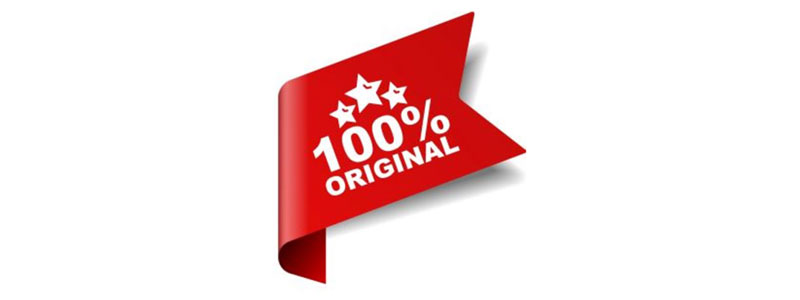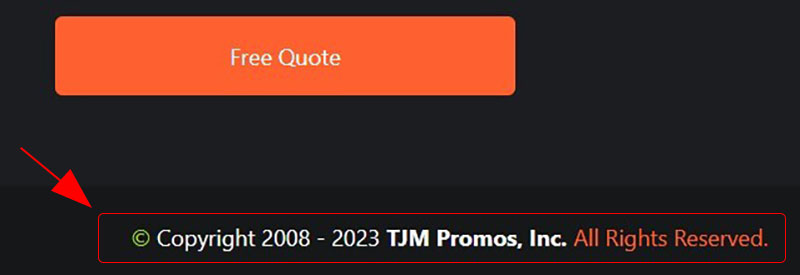
Patch Design, Copyright and You: What You need to know
When you're designing custom patches, originality is the key to avoiding copyright problems.
So you’re looking for an idea for a great looking custom patch. Something that showcases your affinity for “Star Wars” or “Star Trek,” the Marvel universe or all things Disney. You have a terrific idea, using an iconic character from your favorite movie or TV episode that will look fantastic on a patch. You’re all set to order patches, right?
Hold up there, young Jedi. You’re about to run into a little thing called copyright. Violate it and you’re breaking the law. That’s not good. And it can lead to some serious consequences if you’re not careful. Let’s take a look at what copyright is – and isn’t – and what you can do to stay on the right side of it.
What’s A Copyright?
The idea behind copyright isn’t complicated – it’s meant to ensure that the person or persons who create an original work get paid for it, and that they control who can use that work and how it can be used. It’s been a part of U.S. law for more than 230 years.
The U.S. Copyright Office, the government agency that administers and enforces copyright law, defines it this way:
Copyright is a type of intellectual property that protects original works of authorship as soon as an author fixes the work in a tangible form of expression.
Let’s break that down. The first half of copyright is originality. It has to be your idea. But that’s not all. Notice that phrase “fixes the work.” That’s the other half of the meaning. According to the Copyright Office, a work is fixed when it’s “captured … in a sufficiently permanent medium such that the work can be perceived, reproduced, or communicated for more than a short time.”
In other words, if you record an original song, take a photo, paint a picture, draw an illustration, write a book, a blog post or a software app, you own it. No one else can use it or make money from it without your permission.

This blog is actually an example of a copyrighted work. At the bottom of the page, you’ll see a little letter “c” in a circle – like this: ©. That’s the standard symbol for copyright. That’s followed by 2008-2023 and the name of our parent company.

That means we own the rights to everything on this page, and more generally on the entire site from 2008 to the present. And no one else can use these words or images without our permission.
And remember, copyright refers to legal rights, not writing. So it’s “copyrighted,” not “copywritten.”
How Do I Copyright Something?
It’s a lot easier than you think. The instant you take the picture, write the blog post or record the song, you’ve copyrighted it. You own it.
Can You Copyright Other Things?
Bear in mind that copyright protection applies only to expression, never to ideas, processes, concepts or methods, to name a few. Nor does copyright apply to names, titles, slogans, symbols or designs. Those things can be protected by either patent or trademark, which are similar but separate concepts. For example, you can patent your company’s unique process, trademark your custom brand logo, AND copyright your blog content.
Just keep in mind that copyright is the one that applies to creative works.
What does that have to do with my great character patch?
Plenty. How long a copyright lasts depends on when something was created. For any work created after 1977, that’s at least for the life of the creator AND 70 years after that. So you can’t use that idea for free or without the permission of the creator or their estate.
What happens if I still want to use the character?
If the copyright owner agrees, you can pay to license the material from them. They won’t always agree, however, and if they do, it could be quite expensive, especially for very popular works.
If you try to proceed without that licensing, you’ll probably have trouble getting your patches made. No reputable patch maker, including Custom-Patches4Less.com, will knowingly violate copyright law.
If you do find a provider who will make your design – it's possible, since no one can keep up with every potential copyright today – read the Terms and Conditions of your sales agreement. There’s inevitably a clause in there, which you agreed to, that says you, not the company, are responsible for any copyright infringement.
That’s not all. That same clause will also say you’re responsible for any expenses or damages incurred by the patch maker for your oversight.
I’m not worried. They can’t catch everything.
That’s true. If you do get caught, however, things can get real serious, real fast. Always keep in mind that if you infringe someone’s copyright, you are stealing someone’ else’s intellectual property.

That can carry both civil and criminal penalties. And lots of organizations are intensely protective of their copyrighted material. Do you really want to risk tangling with Disney over that Yoda patch?
Penalties for Copyright Infringement
The first step the owner is likely to take is to send you a Cease and Desist letter. Consider that a warning. If you stop using the copyrighted material, stop
distributing it and never repeat it, that’s probably going to be the end of things.

If you don’t stop the infringement, the law can get much more aggressive. You could face civil penalties of up to $30,000 for each work you infringe.
“Willful” infringement – if you sought to profit from it – is where things get really serious. That can bring federal felony charges, and upon conviction, a fine of up to $250,000 and up to five years in prison.
Aren’t there exceptions to copyright?
Yes. There are multiple exceptions that allow you to use copyrighted material for specific, noncommercial purposes. This is called Fair Use. Some of those exceptions are shown below:

Public Domain
Once the copyright protection period for a work expires, that work enters the public domain. As of 2023, most works published before 1928 have entered public domain, which means you can use material (images, text, etc.) from them freely. But some things don't fully enter the public domain. Note too that copyright laws vary from country to country. Something that's in the public domain in the United States might not be somewhere else. It's always a good idea to check before using someone else's work. A good rule of thumb -- when in doubt, don't use it.
How can I make sure I don’t infringe on someone’s copyright?
The best way to be sure you’re not infringing is simple – use your own original work. Get creative and craft a distinctive patch of your own and you’ve created your own copyright! Any reputable patch provider will gladly help you create a unique design that’s ideal for your patch needs. Call or email us today to find out more.
